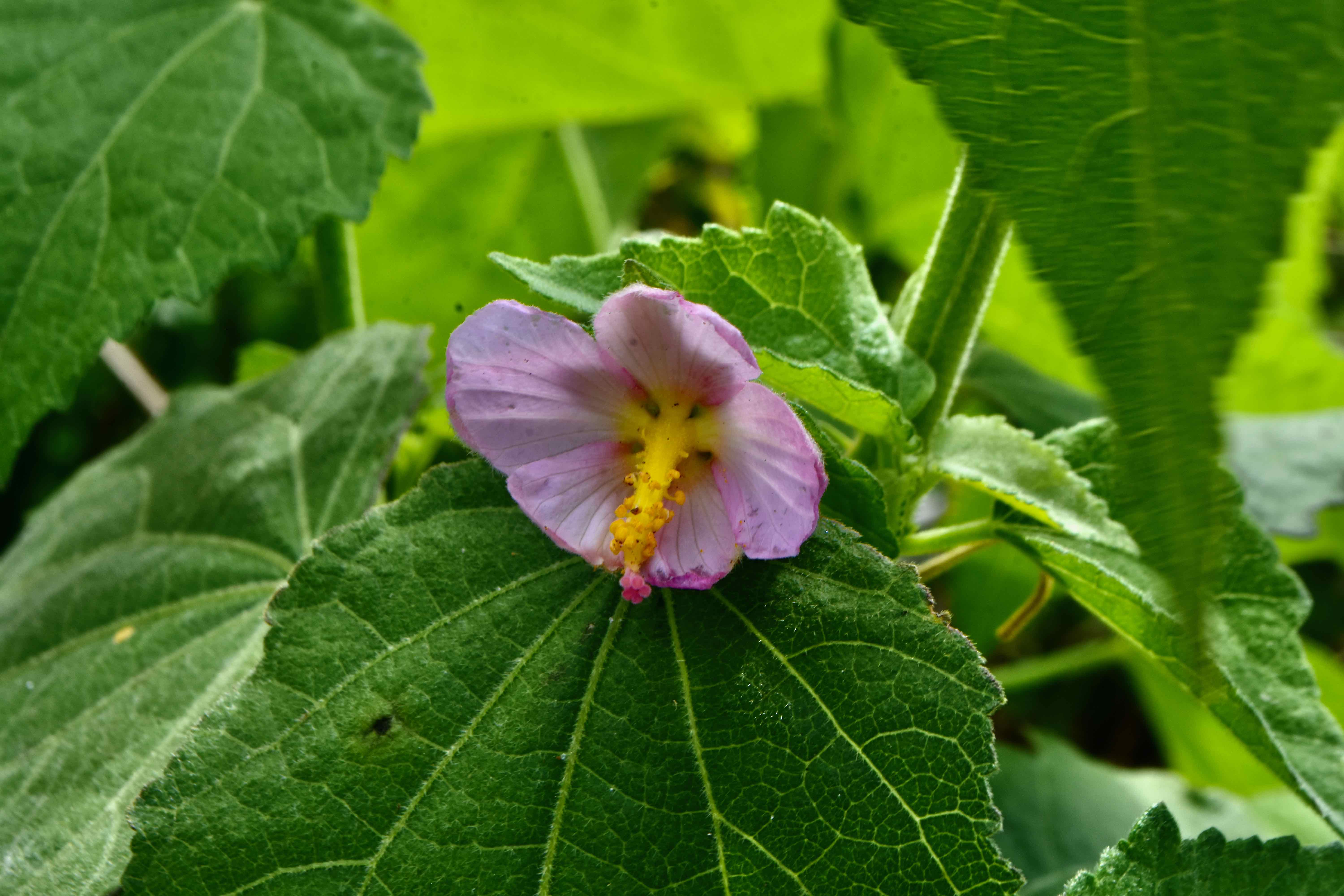
Virginia Saltmarsh Mallow, photographed at the Frances S. Taylor the Everglades Wildlife Management Area, Broward County, in May 2014.
Virginia saltmarsh mallow, Kosteletzkya virginica, isn't just a pretty flower. It's a practical plant as well, and could have significant potential as an agricultural crop. More on that later.
This beauty is a Florida native, found in most of the Sunshine State's 67 counties from the Panhandle to the Keys. It's also found as far north as New York and as far west as Texas. It is found in the Bahamas and Cuba, and surprisingly throughout the Mediterranean and the Black Sea to Iran and parts of the former Soviet Union. It can be found in brackish water, along coastal plains and in swamps and marshes.
According to the texts, Virginia saltmarsh mallow was described and named scientifically similtaneously by different naturalists, one of which was the great Carolus Linnaeus. The North American plants went by K virginica, the European as K pentacarpos. A third naturalist came along and determined the two were in fact the same species and gave the nod to K pentacarpos as the preferred name. More on this taxonomic story in a bit.
Virginia saltmarsh mallow is a tall herb, growing three to five feet tall and with a spread of about four feet and an angular habit. The flowers are white to pink or peach, with five petals and yellow stamens fused into a column. The blooms are about two to three inches across, and appear spring to fall in South Florida. Its leaves are sharply triangular to oval-shaped; the stems are covered with hairs. It looks similar to hibiscus, but it is not.
As the name implies, Virginia saltmarsh mallow is salt-tolerant, which is one of the keys to its agricultural value, but again more on that later. The plant reaches full maturity in about five years, which, unfortunately is also its maximum lifespan.
Virginia saltmarsh mallow is grown by a few nurseries in South Florida, and used in restorations and in landscaping, but its need for wet feet limits its use to areas with wet soil. It's also used to attract butterflies and hummingbirds.
Virginia saltmarsh mallow has been grown experimentally in tidal flats along China's east coast, where it's been used to beautify and revegetate areas, while it also provides food for wildlife. The seeds are high in oil and fatty acids and could be grown commercially as a source of biofuel. The seeds also are high in protein, calcium and potassium while low in sodium, and could be grown for human consumption or animal feed. The plant's high salt tolerance could make it a significant crop in areas where freshwater is scarce.
There are four recognized varieties of Virginia saltmarsh mallow. Sara Alexander, a biologist and taxonomist, has concluded that one variety found only in the Everglades, K pentacarpos var. smilacifolia is sufficiently different from the others that it should be considered a separate variety.
Other common names: Virginia fen-rose, salt marsh mallow, seashore mallow, coastal mallow, and sweetweed. It is a member of Malvaceae, the mallow family, which includes hibiscus, cotton and okra.
Frances S. Taylor the Everglades Wildlife Management Area



